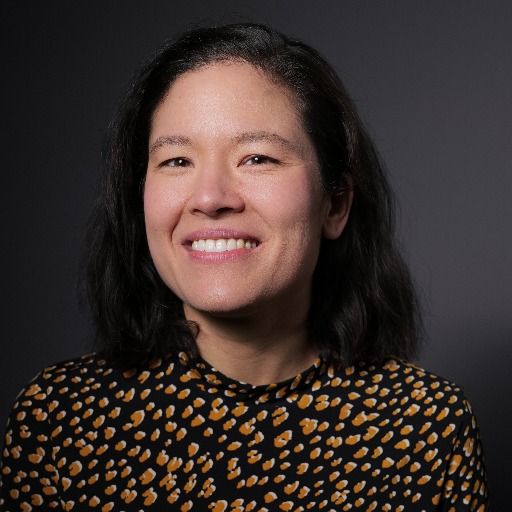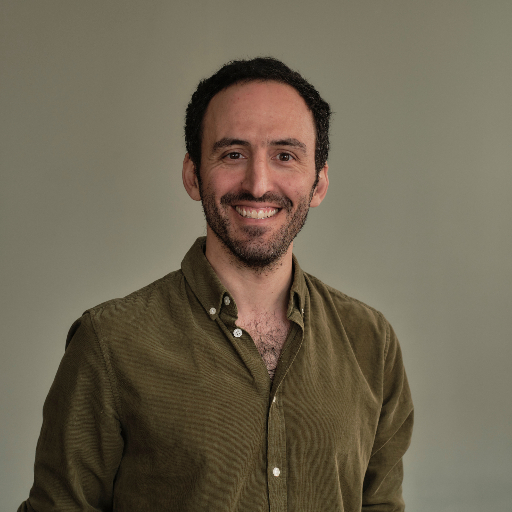We use cookies on this website. Cookies help us deliver the best experience on our website. Read about cookies.
-
- Education
- Education
- Programmes and courses
- Applications and admissions
- Tuition fees
- Scholarships
- Exchange studies at Malmö University
- Study Guidance
-
- After admission
- After admission
- Moving to Malmö
- Pre-orientation
- Arrival guide
-
- About studies at Malmö University
- About studies at Malmö University
- Why choose Malmö University
- Understanding university studies
- Connect with our students
On the page -
- Research
- Research
-
- Doctoral studies
- Doctoral studies
- Doctoral courses
-
- Doctoral schools
- Doctoral schools
- Education, Learning and Globalisation
- Doctoral school: Learning in Multicultural Societal Contexts
- ComBine
- Swedish National Graduate School in Science and Technology Education Research
- Doctoral school: Relevancing Mathematics and Science Education (RelMaS)
- Doctoral school: Sustainable Movement Education
- Finding ways in a time of great future challenges (FinnFram)
- Doctoral school: Pedagogy and Vocational Skills
- Doctoral school: Culturally Empowering Education through Language and Literature
- Research subjects
-
- Research centres
- Research centres
- Biofilms Research Centre for Biointerfaces
- Citizen Health
- Imagining and Co-Creating Futures
- Institute for Urban Research
- Malmö Institute for Migration Studies
- Literacy and Inclusive Teaching
- Centre for Work Life Studies
- Sustainable Digitalisation Research Centre
- Centre for Sexology and Sexuality Studies
-
- Research publications
- Research publications
- Search publications
- Malmö University Press
- Research events
- Participate in a research study
- Coffee Break Quiz
On the page -
- Collaboration and Innovation
- Collaboration and Innovation
-
- Areas of collaboration
- Areas of collaboration
- Muvah
- Innovation
- Collaboration with students
-
- Collaborate with researchers
- Collaborate with researchers
- Labs and facilities
- Culture collaboration
- Support Malmö University
- Alumni & Friends
On the page -
- About us
- About us
-
- Faculties and departments
- Faculties and departments
-
- Faculty of Culture and Society
- Faculty of Culture and Society
- Department of Urban Studies
- Department of Global Political Studies
- School of Arts and Communication
-
- Faculty of Education and Society
- Faculty of Education and Society
- Department of Childhood, Education and Society
- Department of Sports Sciences
- Department of Natural Science, Mathematics and Society
- Department of School Development and Leadership
- Department of Culture, Languages and Media
- Department of Society, Culture and Identity
-
- Faculty of Technology and Society
- Faculty of Technology and Society
- Department of Computer Science and Media Technology
- Department of Materials Science and Applied Mathematics
- Faculty of Odontology
- University Dental Clinic
-
- Find and contact Malmö University
- Find and contact Malmö University
- Visit Malmö University
- News and press
- Map of the buildings (Google Maps)
- Merchandise
- Whistleblowing
- Management and decision-making paths
-
- Vision, objectives and strategy 2025
- Vision, objectives and strategy 2025
- Global engagement
- Sustainability
- Widened recruitment and participation
- Quality assurance work at the University
-
- Malmö Academic Choir and Orchestra
- Malmö Academic Choir and Orchestra
- Student work – video pieces
-
- Annual Academic Celebration
- Annual Academic Celebration
- Academic traditions
- Meet our new professors
- The University in a troubled world
On the page
Oral Health Country/Area Profile Project – CAPP
Oral Health Country/Area Profile Project
The Faculty of Odontology is responsible for a global dental health database, CAPP (former collaboration with WHO).
About CAPP
The Oral Health "Country/Area Profile Programme" (CAPP) database was established in 1995 and aims to provide information on dental diseases and oral health services globally. It has served as a WHO Collaborating Centre for nearly 30 years.
The database is based on national oral health surveys, national health reports, national registers, personal communications, and scientific journals. The data presented in the CAPP follow the WHO manual – “Oral Health Survey Basic Methods”; however, exceptions are made for countries where data is limited.
CAPP is cited by articles, theses, essays, and reports with up to 70-80 citations per year. Yearly, there are around 30,000 visitors to the CAPP database.
Explore Data on Oral Health
Caries Prevalence

Caries Prevalence
Access and download global caries data using the indices Decayed, Missing, and Filled Teeth (DMFT), Significant Caries Index (SiC) and percentage edentulous. Data from 206 countries for different indicator age groups, such as 12-year-olds is available.
Prevalence of Periodontal Disease

Prevalence of Periodontal Disease
Access and download global data for different indicator age groups using the index Community Periodontal Index (CPI).
Oral Health-Related Data

Oral Health-Related Data
Global data on indicators related to oral health, such as sugar consumption, oral health manpower, and oral cancer prevalence, are presented.
Methods and Indices
The WHO manual “Oral Health Surveys—Basic Methods” provides the WHO-recommended standardized reporting system for conducting national oral health surveys, enabling inter- and intra-country comparisons of oral health status.
Caries Prevalence DMFT/DMFS
DMFT and DMFS describe the amount - the prevalence - of dental caries in an individual. DMFT and DMFS are methods to numerically express the caries prevalence and are obtained by calculating the number of
- Decayed (D)
- Missing (M)
- Filled (F)
- teeth (T) or surfaces (S)
It is thus used to get an estimation illustrating how much the dentition until the day of examination has become affected by dental caries. It is either calculated for 28 (permanent) teeth, excluding 18, 28, 38 and 48 (the "wisdom" teeth) or for 32 teeth (The Third edition of "Oral Health Surveys - Basic methods", Geneva 1987, recommends 32 teeth).
Thus:
How many teeth have caries lesions (incipient caries not included)?
How many teeth have been extracted?
How many teeth have fillings or crowns?
The sum of the three figures forms the DMFT value. For example: DMFT of 4-3-9=16 means that 4 teeth are decayed, 3 teeth are missing and 9 teeth have fillings. It also means that 12 teeth are intact.
Note: If a tooth has both a caries lesion and a filling it is calculated as D only. A DMFT of 28 (or 32, if "wisdom" teeth are included) is the maximum, meaning that all teeth are affected.
A more detailed index is DMF calculated per tooth surface, DMFS. Molars and premolars are considered to have 5 surfaces, front teeth 4 surfaces. Again, a surface with both caries and filling is scored as D. Maximum value for DMFS comes to 128 for 28 teeth.
For the primary dentition, consisting of a maximum of 20 teeth, the corresponding designations are "deft" or "defs", where "e" indicates "extracted tooth".
In caries data for adults, the following designations are used:
- DMFT: Mean number of decayed, missing or filled teeth
- %DMFT: Percentage of population affected with dental caries
- DT: Mean number of decayed teeth
- %D: Percentage with untreated decayed teeth
- MT: Mean number of missing teeth
- MNT: Mean number of teeth
- %Ed: Percentage edentulous.
Significant Caries Index (SiC)
A detailed analysis of the caries situation in many countries show that there is a skewed distribution of caries prevalence - meaning that a proportion of 12-year-olds still has high or even very high DMFT values even though a proportion is totally caries-free. Clearly, the mean DMFT value does not accurately reflect this skewed distribution leading to the incorrect conclusion that the caries situation for the whole population is controlled, while in reality, several individuals still have caries. The Significant Caries Index was introduced in order to bring attention to the individuals with the highest caries values in each population under investigation.
Individuals are sorted according to their DMFT values to calculate the Significant Caries Index. The one-third of the population with the highest caries scores is selected. The mean DMFT for this subgroup is calculated. This value is the SiC Index.
Community Periodontal Index (CPI)
Indicators
Three indicators of periodontal status are used for this assessment:
- gingival bleeding
- calculus
- periodontal pockets
A specially designed lightweight CPI probe with a 0.5-mm ball tip is used, with a black band between 3.5 and 5.5 mm and rings at 8.5 and 11.5 mm from the ball tip.
Sextants
The mouth is divided into sextants defined by tooth numbers: 18-14, 13-23, 24-28, 38-34, 33-43, and 44-48. A sextant should be examined only if there are two or more teeth present and not indicated for extraction. (Note: This replaces the former instruction to include single remaining teeth in the adjacent sextant.)
Index teeth
For adults aged 20 years and over, the teeth to be examined are:
- 17/16, 11, 26/27
- 47/46, 31, 36/37
The two molars in each posterior sextant are paired for recording, and if one is missing, there is no replacement. If no index teeth or tooth is present in a sextant qualifying for examination, all the remaining teeth in that sextant are examined and the highest score is recorded as the score for the sextant. In this case, the distal surfaces of the third molars should not be scored.
For subjects under the age of 20 years, only six teeth - 16,11, 26, 36, 31 and 46 - are examined. This modification is made in order to avoid scoring the deepened sulci associated with eruption as periodontal pockets. For the same reason, when children under the age of 15 are examined, pockets should not be recorded, i.e. only bleeding and calculus should be considered.
Sensing gingival pockets and calculus
An index tooth should be probed, using the probe as a "sensing" instrument to determine pocket depth and to detect subgingival calculus and bleeding response. The sensing force used should be no more than 20 grams. A practical test for establishing this force is to place the probe point under the thumbnail and press until blanching occurs. For sensing subgingival calculus, the lightest possible force that will allow movement of the probe ball tip along the tooth surface should be used.
When the probe is inserted, the ball tip should follow the anatomical configuration of the surface of the tooth root. If the patient feels pain during probing, this is indicative of the use of too much force.
The probe tip should be inserted gently into the gingival sulcus or pocket and the total extent of the sulcus or pocket explored. For example, the probe is placed in the pocket at the distobuccal surface of the second molar, as close as possible to the contact point with the third molar, keeping the probe parallel to the long axis of the tooth. The probe is then moved gently, with short upward and downward movements, along the buccal sulcus or pocket to the mesial surface of the second molar, and from the disto-buccal surface of the first molar towards the contact area with the premolar. A similar procedure is carried out for the lingual surfaces, starting distolingually to the second molar.
Examination and recording
The index teeth, all remaining teeth in a sextant where there is no index tooth, should be probed and the highest score recorded in the appropriate box.
The codes are:
0 Healthy
1 Bleeding observed, directly or by using mouth mirror, after probing
2 Calculus detected during probing, but all the black band on the probe visible
3 Pocket 4 - 5 mm (gingival margin within the black band on the probe)
4 Pocket 6 mm or more (black band on the probe not visible)
X Excluded sextant (less than two teeth present)
9 Not recorded
Examples of coding are both illustrated and photographed in "Oral Health Surveys".

